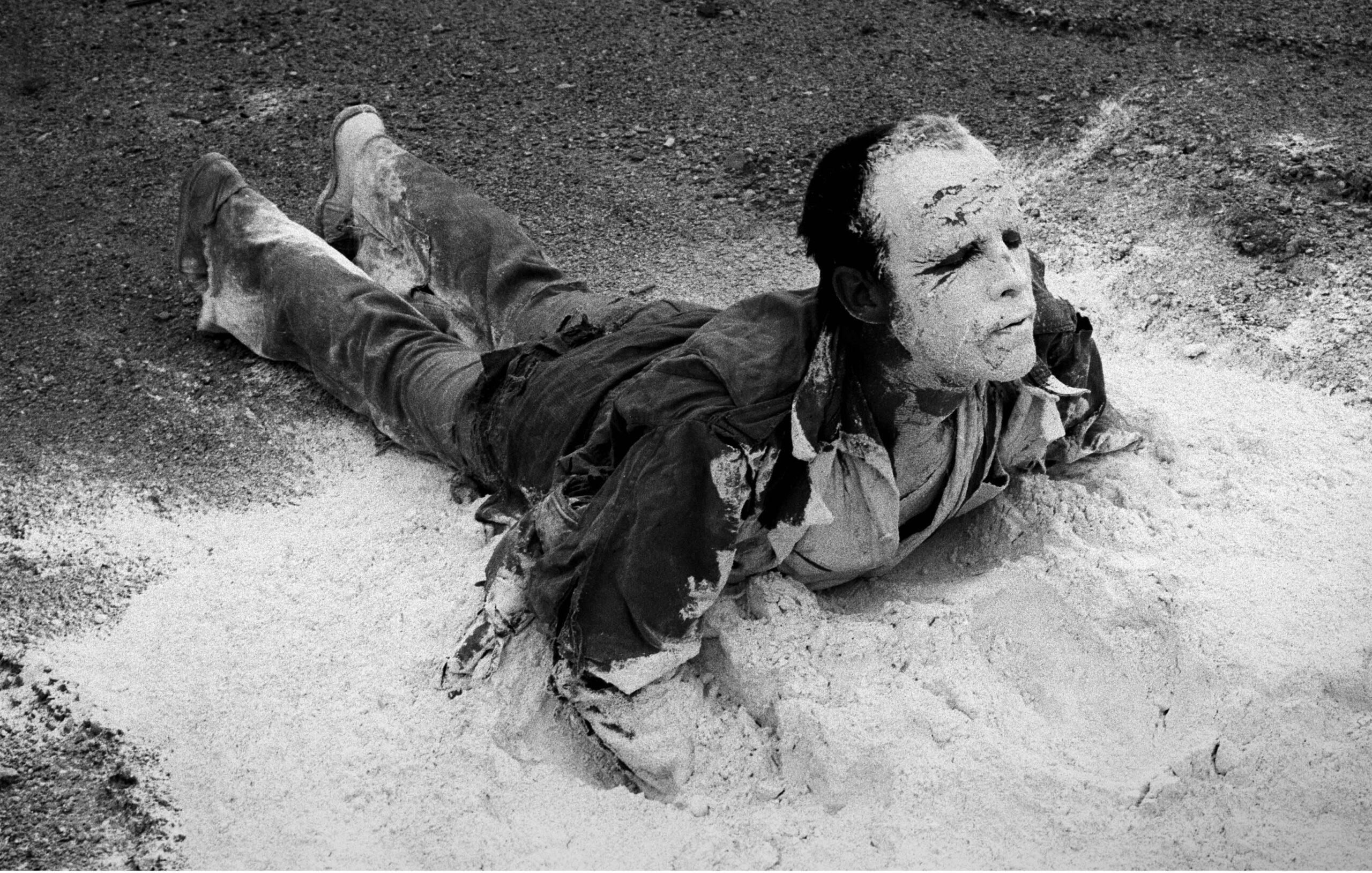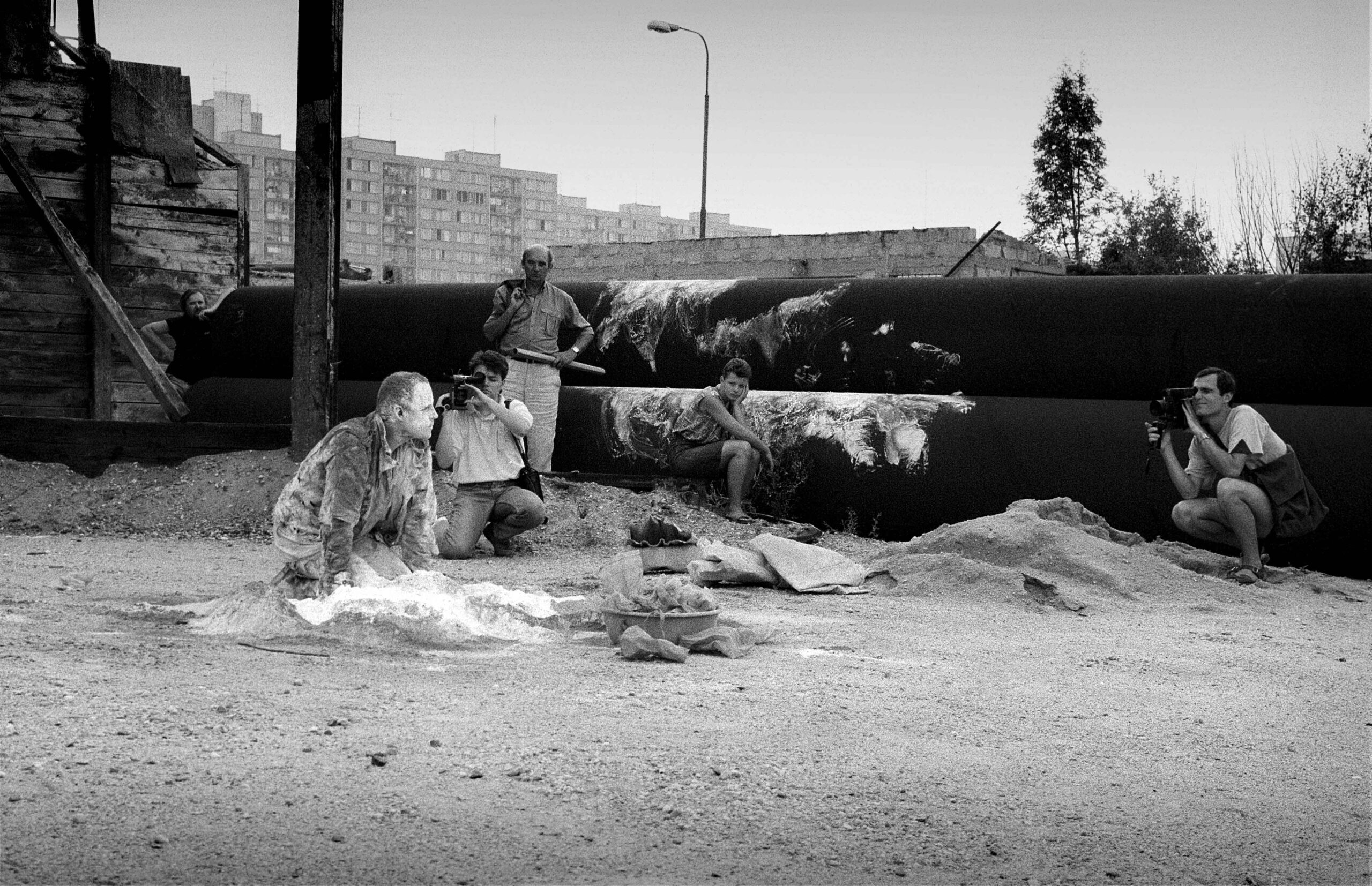Tomáš Ruller: 8. 8. 88
In the 1980s the independent cultural scene moved to peripheral cultural institutions such as the Opatov House of Culture in the middle of a prefab housing complex on the outskirts of Prague. This location, originally seen as disadvantageous, became a strategic currency during the Perestroika years. Indeed, thanks to the bold activities of different people, a progressive cultural program was often made possible. Owing to Jaroslav Krbůšek’s curatorial concept and his persistent struggle with permission-granting authorities, many important figures of the Czech art scene exhibited in the Opatov Gallery in the late 1980s. An imaginative strategy and the peripheral position in the unattractive milieu of this gallery located in the vestibule of the House of Culture enabled Krbůšek to organize exhibitions that would have been unthinkable elsewhere – although some were ultimately forbidden. This was also the case for the Tomáš Ruller exhibition that was meant to be held here on 8. 8. 88. Ruller, one of the most important Czech performers of the 1980s, eventually transformed it into one of his most serious performances, symbolically entitling it 8. 8. 88. As apparent from a recording of the performance that Ruller had videotaped, he welcomed the viewers in front of the closed House of Culture to the opening of the exhibition that did not take place. Then he handed out empty pieces of large-format paper that he had prepared for the exhibition’s installation and asked them to follow him. He led them through a housing project to an abandoned concrete plant where he had plaster and colored pigments prepared. Along the way he pasted the pieces of paper in random spots as if he were installing his exhibition in the public space of the periphery. Yet the performance itself took place at a former concrete plant. He emptied sacks of plaster into a pile on the ground, dropped down and rolled in it. His body’s movement left white prints on rusty pipes. He hung on the rusty structure, climbed a pile of gravel and scattered the remaining papers around the grim surroundings. The performance culminated in his pouring a flammable red paint over himself and lighting himself on fire. He fell, arms outstretched into a big puddle, to emerge completely covered with mud. Then he loaded a rusty structure onto his back and dragged it up a small hill with a view of the housing project. With Leoš Janáček’s Glagolitic Mass playing in the background, the performance ended with refreshments and wine, customary for the opening of an exhibition. This performance/exhibition was undoubtedly for those attending a cathartic experience during late socialism. It is, among other things, proof of a shift in perception of the possibilities for presenting visual art. Since the 1960s on an exhibition could be not only a site-specific installation, but also an “action” or performance, as demonstrated by Eva Kmentová’s Footprints (1970) or Dalibor Chatrný’s An Eight-Hour Exhibition and Its Reconstruction (1970).
Bibliography:
Jaroslav Krbůšek (ed.), Opatov 88, exh. cat., Prague, 1988.
Pavlína Morganová, A Walk Through Prague: Actions, Performances, Happenings, 1949−1989, VVP AVU, Prague, 2017, p. 450.
Pavlína Morganová – Terezie Nekvindová – Dagmar Svatošová, Výstava jako médium. České umění 1957−1999 [The Exhibition as Medium. Czech Art 1957−1999], AVU, Prague, 2020, pp. 724−733.
Date: 8 August 1988
Curator: Jaroslav Krbůšek (1952)
Participant: Tomáš Ruller (1957)
Location: Gallery Opatov, Prague





